Shaping Vancouver 2016: Conversation 4
What Is The Vision For Chinatown?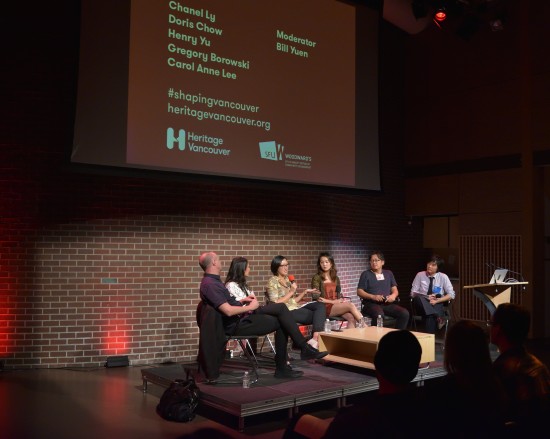
The fourth conversation in Heritage Vancouver’s 2016 Shaping Vancouver series focused on Chinatown, one of the enduring neighbourhoods that define Vancouver. There is alarming concern in the community over the impacts of development, as Chinatown’s Neighbourhood has approved high density developments in order to increase housing. The introduction of new typologies to accommodate density and how that has disrupted the existing fabric of the area have fueled fears over the loss of Chinatown character. These fears have been expressed in film, demonstrations, public talks, letters, and numerous news articles.
Moderated by Bill Yuen, panelists explored the future of Chinatown, discussed what tools are in place to maintain the neighbourhood’s distinguishable character and rich history as well as what constitutes healthy development in the area.
Moderator
Bill Yuen
Manager of Heritage Vancouver.
Panelists
Chanel Ly
Youth for Chinese Seniors Project founder.
Doris Chow
Youth Collaborative for Chinatown co-founder, Chinatown Historic Area Planning Committee Board Director.
Henry Yu
Associate Professor of History at St. John’s College, UBC, Co-Chair of the Legacy Initiatives Advisory Council for the Province of British Columbia, Co-Chair of Vancouver project “Dialogues between First Nations, Urban, Aboriginal, and Immigrant Communities”.
Gregory Borowski
Architect at Merrick Architecture, Chair of Vancouver and UBC Urban Design Panels.
Carol Anne Lee
CEO and Cofounder of Linacare Cosmotherapy Inc., Chair of the Vancouver Chinatown Foundation, the Vancouver Chinatown Revitalization Committee and honorary patron of the Chinese Canadian Military Museum.
Yuen began the evening by highlighting how Chinatown has recently been discussed in the media and posed the question to panelists – how should Chinatown exist?
- “This is an important moment in the evolution of Chinatown to ensure revitalization continues, renews the cultural and heritage fabric of the neighbourhood, and is socially and economically sustainable.” Source: Chinatown Neighbourhood Plan and Economic Revitalization Strategy
- “Chinatown will remain a place that tells the history with its physical environment, a place that serves the needs of residents, youth and visitors, and a hub of commercial, social and cultural activities.” Source: Downtown Eastside Plan
- “Revitalization without forgetting important heritage.” Source: CBC News
- “What’s the relevance of Chinatown anymore? Does it have a reason for existence anymore? In Vancouver, we live the multicultural dream. You can get Chinese groceries on every street corner. I don’t have to go back to Chinatown like in the old days, because that’s where we were allowed to live. And so this whole debate of what Chinatown should be has taken on some racist tones, which is disconcerting.” Source: The Vancouver Sun
Throughout the discussion two main topics evolved: acknowledging and using the local knowledge of Chinatown, and supporting community building mechanisms.
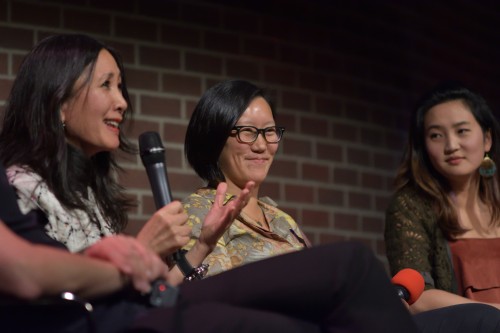
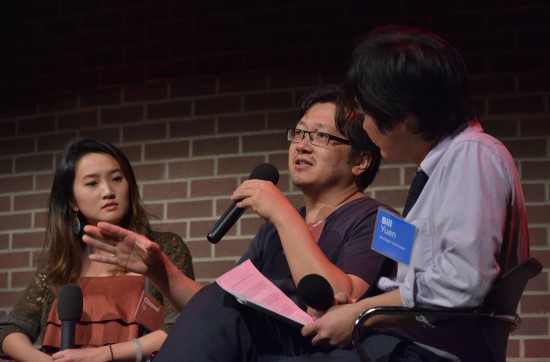
Acknowledging and using local knowledge
Chanel Ly stated that the growth of Chinatown should be culturally responsive and look to its elderly residents for guidance, suggesting that there should be Chinese influence on neighbourhood decisions. Henry Yu noted the danger of leaving the real estate market to its own devices – hinting that it would lead to a culturally stripped neighbourhood. Creating a Heritage Conservation Area for Chinatown was discussed, but panelists agreed that the designation would need to look beyond architectural significance to incorporate intangible cultural heritage. Yu further expressed the need for spaces for young and old residents to interact with one another to share their culture and establish community ties. Carol Anne Lee stated that creating these community ties would maintain Chinese culture in Chinatown, while and reinforce the Chinese elderly’s place in the community. All panelist agreed that preserving the Chinese heritage in the area, Doris Chow mentioned that by recognizing Chinatown and its history is reflective of the Chinese Canadian experience. Chow continued that this history serves as an inspiration for Chinese-Canadians to get in touch with their roots.
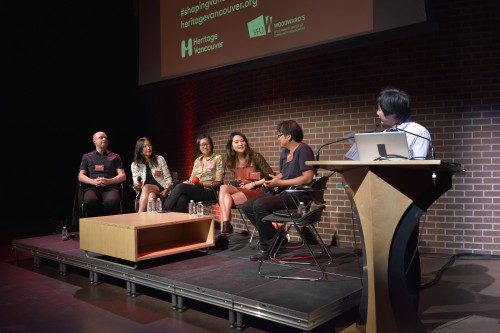
Support for Community Building Mechanisms
Ly outlined the difficulty support workers are having meeting the elderly community’s need. Currently two support workers in Chinatown serve approximately 1700 elderly, and the need for elderly support will increase in the coming years. Chow suggested that consistent cultural programming that connects youth to the elderly will strengthen Chinatown’s identity. Yu suggested that the creation of land trusts in Chinatown could help maintain neighbourhood character and reinforce the low income housing in the area. Gregory Borowski mentioned that rezoning Chinatown as a Heritage Conservation Area could aid the neighbourhood in providing funding for its community initiatives, such as the Mahjong Socials. Chow commented on the Mahjong Social’s success in connecting the community, but noted that space is now becoming an issue. Panelists expressed their frustration over the slow movement of policy creation. Chow noted that it was languor of supportive community policy that led to the creation of the Mahjong Socials. Ly agreed, and suggested that policy needs to be adaptable to the community’s needs over time, allowing for community members to become involved with the process.
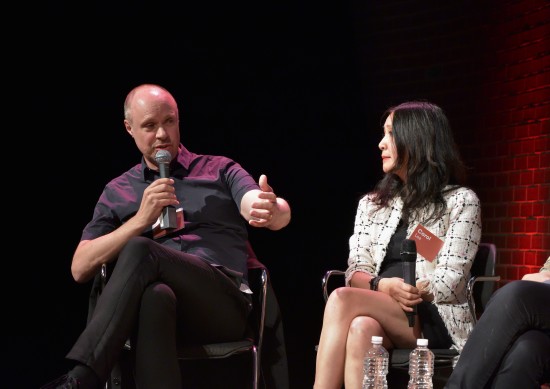

Questions from the audience
Could Chinatown use ecosystem analysis methods, usually used for animal habitats, to look for intangible elements of community? What does this community need to survive?
Yu agreed with this idea, and noted that UNESCO uses this strategy in determining what the anchors of a community are. He continued that Chinatown does not currently have the right policy tools to implement this method. He suggested that new development and new community members can weave themselves into this neighbourhood and contribute positively to its identity but it can’t be at the sacrifice the current community.
How can Chinatown be made safer? Homelessness spreading from the Hastings area has made many feel unsafe in their own neighbourhood. Many of the new businesses opening in Chinatown are not culturally congruent to Chinatown’s residents - how can Chinatown prevent the loss of its culture?
Borowski responded that revitalizing Chinatown’s laneways could help create a safer street culture which will provide more security, and noted that tax deductions for culturally appropriate stores and surcharges for newer businesses could help promote Chinese businesses. Lee noted that the community needs to partner with the police and neighbourhoods groups to increase safety and that this issue is a complex social matter. Ly sympathized with the audience member but noted that the problems of the Downtown Eastside are systemic issues. Ly suggested that community cooperation and support is needed to hold governments accountable. Chow agreed, stating that this is an affordability issues. Chow continued that businesses that remain open into the evening will make the area overall safer. Yu finished by reminding the audience that Chinatown and the Downtown Eastside are not against one another, and that the two neighbourhoods need to work together to improve both neighbourhoods.
Directed to Gregory Borowski: How can neighbourhoods get architects to have more influence on low income needs? What tools do architects use to meet all of the competing needs of a neighbourhood?
Borowski noted that there is a common trend to assume that all developers are greedy individuals who do not think about the broader community, and warns that this is often an inaccurate portrayal. He continued, stating that architects have a responsibility to work alongside developers to bring the values of the developer and the community together in design. Borowski continued that low income needs are often met through government initiative programs or in a strictly private development, community amenity contributions will contribute to the overall community.
Is revitalization for the people or the businesses in Chinatown? A large bulk of this conversation focused on making Chinatown friendly to businesses, but a neighbourhood’s business and its people are related.
Yu agreed with the audience member, noting that concrete action as opposed to repeated “vision” conversations, needs to take place to directly serves the needs of Chinatown residents. He highlighted the need for 3000 residential spaces that will serve the aging residents of Chinatown while making it possible to grow the community.
Heritage conservation is largely dependent on political will. Politicians commonly do not understand a community fully and tell the community to rally for what they want. Should it not also be a development component to consult the community? What is the power of the community’s political will?
Yu did agree but noted that this consultation should also consider the importance of an area to the overall city. He stated that many Vancouver residents are passionate about the future of Chinatown even if they are not residents of the area themselves. He emphasized the political power of placing the city-wide opinions of Chinatown alongside the opinions of the residents of Chinatown to aid in understanding an area’s significance.
What about public spaces in Chinatown? Is it possible? Given the issues with the Downtown Eastside and the Closure of the night market, there are definite struggles, but could a public space be found in outdoor markets?
Chow strongly agreed, noting that public spaces are hugely important in Chinatown, especially given the aging community. Yu recommended laneway revitalization, painting an image of a laneway hosting a variety of businesses or a night market. He noted that this would make the community safer as well as grow the neighbourhood, socially and economically. Borowski agreed with Yu and suggested a revitalization of Memorial Square while reimagining the unused areas of Chinatown.
Taxes and subsidies are often a one time thing and organizations struggle to survive long term. What mechanisms would support Chinatown’s organizations?
Boroski suggested implementing a reserve fund for facilities, which distributes funds to a business over twenty years, giving a business time to firmly establish themselves within a community. Chow agreed noting that many businesses are currently struggling after the first few years. Ly mentioned her excitement of Chinatown’s time in the limelight, and noted that it gave her hope to see young people becoming more involved and rallying for the future of Chinatown.
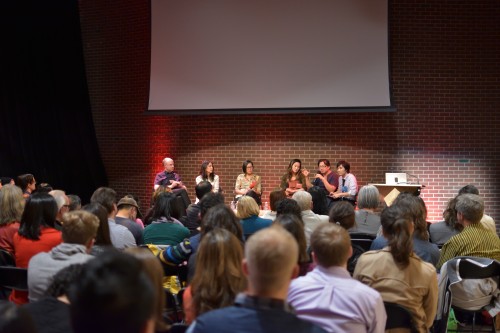
We acknowledge the financial assistance of the Province of British Columbia. Thank you to SFU’s Vancity Office of Community Engagement for co-presenting the series.
All photo credits go to roaming-the-planet.